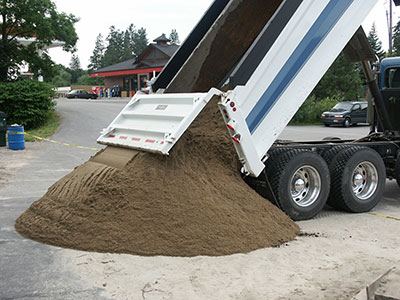Everything You Need to Know About Mulch: Types, Benefits, and How Much to Use
Everything You Need to Know About Mulch: Types, Benefits, and How Much to Use
Mulch is one of the simplest and most cost-effective ways to improve your landscape, yet many homeowners don’t realize how much impact it has on plant health, soil quality, and curb appeal. Whether you’re covering a flower bed, prepping a vegetable garden, or finishing a new landscape design, the right mulch can make all the difference.
At TDS, we deliver mulch across Utah and help customers choose the best option for their projects. Here’s a complete guide to understanding mulch—from types and benefits to how much you actually need.
Mulch Types
1. Organic Mulch
Organic mulch is made from natural materials that break down over time, enriching the soil. Common options include:
-
Bark mulch – Long-lasting and attractive, ideal for flower beds and borders.
-
Shredded wood – Great for moisture retention and weed suppression.
-
Compost mulch – Adds nutrients quickly, perfect for gardens.
Pros: Improves soil health, natural appearance
Cons: Needs periodic replenishing
2. Inorganic Mulch
Inorganic mulch doesn’t decompose and is mainly used for decorative or functional purposes.
-
Rock or gravel – Ideal for xeriscaping and low-maintenance areas.
-
Rubber mulch – Durable and great for playgrounds.
-
Landscape fabric with cover – Prevents weeds and erosion.
Pros: Long-lasting, low maintenance
Cons: Does not enrich soil
3. Bark Mulch in Utah
Bark mulch is especially popular in Utah for its rich color, durability, and weed-suppressing qualities. However, it works best when combined with proper irrigation to prevent drying out in Utah’s hot, dry summers.
Benefits of Mulch
-
Moisture Retention – Reduces evaporation, meaning less watering.
-
Weed Control – Blocks sunlight to stop weed growth.
-
Temperature Regulation – Protects roots from extreme heat and cold.
-
Erosion Prevention – Keeps soil in place during wind and rain.
-
Visual Appeal – Gives beds a clean, finished look.
How Much Mulch Do You Need?
The general rule:
-
2–3 inches for flower beds and gardens
-
3–4 inches for pathways or heavy weed-prone areas
Measure your bed’s length, width, and desired depth, then use a mulch calculator (like the one on our site) to get the right amount. Ordering too much can waste money—ordering too little leaves gaps.
When to Mulch in Utah
Utah’s dry climate and seasonal extremes mean timing is important:
-
Spring: Mulch after soil has warmed to lock in moisture before summer heat.
-
Fall: Mulch before the first frost to protect roots during winter.
-
Avoid late winter mulching as it can delay soil warming in spring.
Get the Right Mulch for Your Yard
Whether you’re looking for organic vs bark mulch in Utah, decorative gravel, or compost mulch, TDS can deliver exactly what you need—right when you need it. Our team will help you calculate quantities, choose the right type, and time your delivery for the best results.
Utah’s Top Landscaping Delivery Company
Our Mission
We strive to make sure everybody has the beautiful topsoil that is going to make their yard shine. Topsoil is the basis of all beautiful grass, and there is nothing better than coming home to a beautiful yard.
Our Vision
Working in the industry we realize that dealing with drivers and delivery can be tough on anyone. We work with big companies and small customers just looking for one load. We want our topsoil to not only be the best dirt they have in their yard but in the whole neighborhood.


